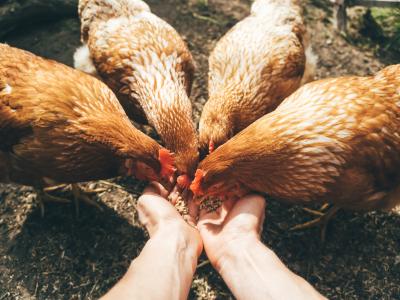Oct 20, 2010 (CIDRAP News) A disease that might have been highly pathogenic avian influenza (HPAI) killed poultry across much of the United States in 1872 and closely followed a nationwide outbreak of influenza in horses, according to a historical analysis by researchers from the National Institutes of Health.
The epizootic of "henfluenza," as it was called by some at the time, apparently escaped notice in the scientific literature until now, according to David M. Morens and Jeffrey K. Taubenberger, writing in Influenza and Other Respiratory Viruses. They gathered their evidence through Web-based searching of newspaper archives.
The avian disease's "strong temporal and geographic association with the equine panzootic, and its clinical and epidemiologic features, are most consistent with highly pathogenic avian influenza," the report says. "The avian epizootic could thus have been an early instance of highly pathogenic avian influenza."
The first documented outbreak of HPAI, originally called fowl plague, was in 1878, six years after the 1872 epizootic, the report says.
Using two online newspaper archives, Morens and Taubenberger conducted a search of 89 newspapers published in 22 of the then-37 states and in Colorado and Utah Territories, covering 1872 and the first 6 months of 1873.
They found that the avian outbreak was preceded by and closely associated with "a well-reported panzootic of equine influenza" that had begun around Markham, Ont., in late September 1872. The equine flu spread rapidly into the United States along railroad lines, spanned the nation, and reached the Caribbean and Central America. It affected horses, mules, and circus zebras, and also spilled over into dogs and cats.
Many individual human illness cases and local outbreaks, often linked to exposure to sick horses, were also reported during the equine flu outbreak, the report says. The human cases were generally mild and uncomplicated.
Deadly outbreaks in chickens were first reported in Poughkeepsie, N.Y., on Nov 15, 1872, the article says. Whole flocks usually got sick at the same time, with most or all of the birds dying. The disease struck prairie chickens, turkeys, ducks, and geese as well as chickens. The illness went by many names, but newspapers most often called it "the chicken disease."
The authors found evidence of the epizootic in 9 of the 22 states included in their search; they concluded that it was concentrated in the Northeast and Midwest and continued until Dec 15, 1872. All the avian outbreaks occurred in areas that were having, or had had within the previous 1 to 2 weeks, widespread equine flu. A number of local observers linked the avian disease to the equine disease and said that chickens got sick after being allowed to forage in stables that housed ill or recently ill horses.
There were also reports at the time of "an allegedly novel fatal swine disease," which was often attributed to pigs rooting in stables that had housed sick horses, the authors say. But the disease was poorly described and therefore not distinguishable from swine fever.
The researchers say it is impossible to conclusively identify any of the animal diseases of the time, because no materials suitable for microbial testing have been found. But the avian disease's strong association with equine flu and its clinical and epidemiologic features are "highly consistent with influenza," and specifically with HPAI, they write.
The horse disease clearly spread by railroad, but how the avian disease traveled so quickly is less clear, the report says. It might have been spread by rail shipment of poultry, but the authors found little information about large-scale poultry shipments at the time, and poultry were usually shipped from west to east, opposite to the direction of the disease's spread.
"If the 1872 poultry epidemic was caused by influenza, it would be the first such epizootic identified," Morens and Taubenberger write. But similar outbreaks were described earlier, and avian flu may have existed for centuries without detection, they add.
"To better understand human influenza, which has been repeatedly pandemic over at least 500 years, it may be fruitful to examine nontraditional historical sources, such as equine, poultry, and agricultural records," they conclude.
Morens DM, Taubenberger JK. An avian flu outbreak associated with panzootic equine influenza in 1872: an early example of highly pathogenic avian influenza? Influenza Other Respi Viruses 2010;4:373-7 (Online publication Oct 19) [Full text]


















